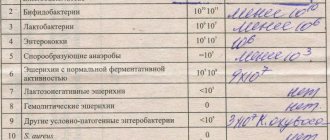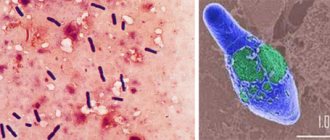November 30, 2021
One of the main reasons for the spread of rotaviruses is non-compliance with personal hygiene rules, when transmission of infection occurs through hands, which in turn contaminate dishes, toys, and linen
The pathogen is transmitted through dirty hands, that is, the transmission mechanism is fecal-oral, although airborne droplets are also possible. It can affect people at any age, and the causative agent of rotavirus gastroenteritis is a virus from the order Rotavirus, family Reoviridae. Routes of transmission: contact and household (through dirty hands and household items); aqueous (when drinking water infected with viruses, including bottled water); nutritional (most often when consuming milk and dairy products).
The possibility of airborne transmission of rotavirus infection cannot be ruled out. But one of the main reasons for the spread of rotaviruses is non-compliance with personal hygiene rules, when transmission of the infection occurs through hands, which in turn contaminate dishes, toys, and linen.
The carrier of the infection is a sick person or a healthy virus carrier. The virus multiplies in the cells of the mucous membrane of the gastrointestinal tract and is excreted in the feces for up to 3 weeks (usually 7-8 days from the first symptoms of the disease). Damage to the mucous membrane of the digestive tract disrupts the digestion of food and leads to the development of severe diarrhea and dehydration. The main mechanism of transmission of rotavirus infection is through food. Infection occurs through the fecal-oral route.
The causative agent of rotavirus infection and mechanisms of infection
The causative agent of intestinal flu is rotavirus (from Latin rota - wheel), a virus from the Reoviridae family. The virus owes its name to its shape - it looks like a wheel with short spokes and a thick rim. Rotavirus is resistant to low and high temperatures, ultrasound, and does not die in chlorine and formaldehyde.
The most common mechanism of spread of rotavirus infection is fecal-oral. The virus enters the body from contaminated objects and dirty skin of the hands - which is why the key measure to prevent rotavirus infection is personal hygiene.
The disease is also spread by airborne droplets (by contact with a sick person) and nutritional routes (by eating poorly washed foods and contaminated water).
Material for research
Native fecal samples collected in the first 72 hours from the onset of the disease. The diagnostic value of studying smears from the mucous membranes of the upper respiratory tract and the blood of patients in the acute phase of diseases is not very informative.
Etiological laboratory diagnosis includes detection of antigens or RNA of group A rotaviruses in fecal samples.
Comparative characteristics of laboratory diagnostic methods
The most common studies are the detection of group A rotavirus antibodies in patient feces using ELISA, and less commonly, latex agglutination and ICA. Detection of group A rotavirus RNA using PCR has become less widespread. The previously described detection of group A rotavirus RNA using electrophoretic detection of a segmented genome in a polyacrylamide gel is currently of limited use for research purposes.
The analytical sensitivity of detecting rotavirus RNA using PCR is higher than when detecting their antigens, but taking into account the high concentration of rotaviruses in feces in the first days of illness, this does not lead to large differences in the diagnostic sensitivity of these studies. The low specificity of reagent kits can have a much greater impact on the results of studies. On the territory of the Russian Federation, reagent kits are used that have diagnostic specificity/sensitivity in relation to reference test systems* of 45/62 and 90/60, respectively. When examining patients later than 72 hours from the onset of the disease, as well as persons with erased clinical symptoms, it is advisable to use a more sensitive method for detecting rotaviruses - RNA detection by PCR.
Isolation of the virus in cell culture is not used in the practice of clinical diagnostic laboratories.
Epidemiology
Rotavirus infection is a typical seasonal disease. According to statistics, in almost 93% of cases the disease develops in the winter months.
The infection often spreads in epidemic outbreaks - especially in kindergartens, hospitals, nursing homes and other institutions where children or adults with weakened immune systems are in close contact.
Children are most susceptible to infection. The share of rotavirus infection is 39.4% of all episodes of diarrhea under the age of 5 years.
Signs and symptoms5
- Uncontrolled diarrhea is the most dangerous symptom of rotavirus gastroenteritis. In some cases, diarrhea leads to dehydration, which can in turn be fatal. 17.8% of deaths from diarrhea under 5 years of age are due to rotavirus infection.
- Excessive vomiting is another symptom that leads to dehydration.
- Severe stomach and intestinal cramps, flatulence.
- Dry cough, nasal congestion, sore throat are symptoms due to which, in the early stages, rotavirus infection can be confused with the flu or tonsillitis (sore throat).
- Conjunctivitis, enlarged lymph nodes.
- General weakness, apathy.
- Appetite disturbances - up to complete refusal to eat and drink in severe forms of the disease.
- Pale skin, dry mouth, chapped lips.
- Severe increase in body temperature.
Treatment of the disease in children
Treatment is symptomatic.
Since it is impossible to kill rotavirus, treatment is carried out in such a way as to reduce symptoms. Firstly, it is necessary to normalize water-salt metabolism. It is disrupted due to vomiting, diarrhea, and causes weakness and serious condition. Secondly, we must try to prevent the development of a secondary infection, which can greatly prolong the disease.
In order not to artificially create a favorable environment for the growth of bacteria, it is necessary to exclude all lactic acid products from the menu of a sick child. Since the baby has no appetite, there is no need to force him to eat. You can offer him jelly or chicken broth. You have to prepare these dishes yourself so that all the ingredients are fresh and natural.
If the appetite is partially preserved, then you can offer the child liquid rice porridge, which must be prepared in water. No oil should be added. But a little sugar won't hurt. The main thing is not to use large portions. They will definitely provoke a gag reflex. Take short breaks between taking individual portions of food.
Course of the disease7
The following stages are characteristic of intestinal flu:
- The incubation period is from 12 hours to 5 days.
- Acute onset - as a rule, already in the first hours of illness the patient’s temperature rises sharply, chills appear, a strong cough begins, and the nose gets stuffy. A little later, the main symptoms appear - nausea, diarrhea with watery stools, cramping pain in the stomach and intestines.
- If the infection is properly treated, diarrhea will last from 5 days to a week. In the first 2-3 days, the stool remains watery (in infants it may become colorless), then it becomes clay-like.
- Pain and sore throat, runny nose and cough disappear after 2-3 days. At the same time, the body temperature remains elevated.
- The rehabilitation period after rotavirus gastroenteritis is 5-7 days.
Incubation period
The duration of the incubation period (the time interval from infection to the appearance of the first signs of rotavirus) depends on the state of the immune system and the number of viral particles that have penetrated the intestines. On average it is 3–5 days.
The illness lasts a week, and in some adults, rotavirus symptoms do not stop for 10–12 days. After recovery, the human body develops specific lifelong immunity to the infection, making it almost impossible to become infected again with this type of virus. The exception is people with an initially weakened immune system.
The contagious period begins from the appearance of the first signs of the disease and lasts until recovery. All this time, the sick person continues to release viral particles.
Up to contents
Possible complications8
Rotavirus infection poses the greatest danger to young children from the first days of life to 3-5 years and pregnant women:
- At an early age, intestinal flu is a deadly disease - severe dehydration of the body can lead to death.
- Dehydration caused by rotavirus gastroenteritis during pregnancy leads to the risk of miscarriage.
Possible complications of rotavirus infection:
- Pancreatitis, gastritis, enlarged pancreas.
- Intestinal inflammation.
- Hemorrhagic gastroenteritis.
- Acute renal failure.
- Circulatory disorders.
- Gasser syndrome.
- Necrotizing enterocolitis.
To minimize the risk of the disease and prevent the development of complications, it is important to promptly diagnose rotavirus infection and begin adequate treatment.
Diagnostics
In order for a doctor to diagnose rotavirus infection, it is necessary to conduct a stool test for the presence of particles of the virus genome in it (this method is called “polymerase chain reaction”). In addition, various other tests are performed on blood, urine and stool. This allows you to detect infection earlier and prevent complications in the child.
Under domestic conditions, it is very difficult to diagnose this infection for an ill family member. Therefore, consultation with a doctor is necessary in any case, no matter how confident a person is in this diagnosis and methods of its treatment. There are a large number of infectious and non-infectious diseases that occur with symptoms similar to rotavirus infection.
For example, parents may mistake non-infectious diseases of the liver, stomach, intestines, and pancreas for a manifestation of rotavirus infection. With them, the sick child complains of nausea, vomiting, abdominal pain after certain (fatty, spicy, fried) foods, or indicates that all manifestations are disturbing only on one side of the body and began after severe emotional stress.
Similar signs of the disease can occur in case of poisoning with drugs or poisonous plants (more often it is children who suffer from this if they are left alone at home and can get to the home first aid kit, or walk unattended and can try different berries).
Read more about food poisoning in children in our article “Recommendations from a pediatrician for food poisoning in a child.”
Online consultation with pediatrician Olga Nikolaevna Tekutyeva
Registration online
During the consultation, you will be able to voice your problem, the doctor will clarify the situation, interpret the tests, answer your questions and give the necessary recommendations.
Prevention
The key measure to prevent rotavirus is to observe the rules of personal hygiene - timely washing of hands, eating only thoroughly washed and properly processed foods, using only filtered boiled water for drinking. Water used for domestic purposes must be treated or chlorinated.
Rotarix and RotaTek vaccines show high effectiveness in preventing rotavirus infection.
- Rotarix is a live monovalent vaccine of an attenuated strain of human rotavirus. The vaccination course consists of two doses. The first dose should be given to the baby from 6 weeks of age. The interval between doses should be at least 4 weeks. The vaccination course is preferably completed by 16 weeks of age and must be completed by 24 weeks of age.
- RotaTek is a live oral pentavalent vaccine containing five live reassortant strains of rotavirus. The vaccination course consists of 3 doses with an interval between doses of 4 to 10 weeks. The course must be completed before the baby reaches 32 weeks of age.
Treatment12
Drug treatment for rotavirus infection is prescribed by a doctor. In most cases the following are used:
- To remove toxins: activated carbon, Smecta, Enterosgel.
- To restore the functions of the gastrointestinal tract: digestive enzymes (Festal, Somilase, Solizim).
- To reduce the temperature (in cases where it rises above 38 ºС): antipyretic drugs (Ibuprofen, Paracetamol).
- To relieve stomach pain: antispasmodics (No-Shpa, Enterofuril).
- To suppress bacterial infections that often accompany rotavirus gastroenteritis: antibiotics.
- To restore electrolyte balance: probiotics.
General recommendations:
- Drink small amounts of fluid frequently to prevent dehydration. You should drink clean boiled water, dried fruit compotes, berry fruit drinks, and unsweetened tea.
- The patient's menu should include light, quick-to-digest, protein-rich foods - dairy-free cereals, steamed poultry and fish cutlets, fruit and vegetable purees. From the patient’s diet it is necessary to exclude everything fried, smoked and salted, sweets, foods high in fats and carbohydrates, flour products (including pasta), millet and pearl barley porridges, milk and fermented milk products, spices, coffee, legumes (and other products , which can cause flatulence).
Nutrition after rotavirus
In order to quickly and completely restore the digestive organs after an illness, it is recommended to follow proper nutrition for two weeks. After recovery, during this period you should refrain from consuming the following foods:
- various low-temperature drinks and foods, such as ice cream;
- dishes from legumes;
- Rye bread;
- beet;
- wheat porridge;
- whole milk.
Kagocel for rotavirus infection
Post-registration studies of the drug Kagocel have shown that in case of combined viral lesions of the respiratory and gastrointestinal tracts (which includes rotavirus infection), taking Kagocel in combination with other medications promotes faster recovery and alleviation of the disease. Proven effects of Kagocel:
- increase in pathogen elimination by 3 times;
- reduction in the duration of fever by an average of 1.1 days;
- reduction in the duration of intoxication symptoms (headache, lethargy and loss of appetite) by 1.2 days;
- regression of catarrhal phenomena (relief of symptoms of pharyngitis and rhinitis by the 3rd–4th day of treatment);
- reduction in the duration of diarrhea by 1.5 days;
- acceleration of normalization of stool frequency for several days;
- acceleration of restoration of the function of the villous epithelium of the small intestine by 1.5 times.
Also, taking Kagocel allows you to reduce by 3 times the likelihood of re-infection of the patient with rotavirus gastroenteritis.









